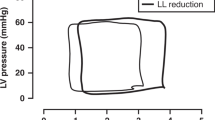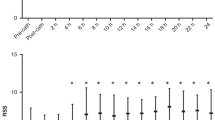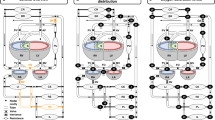Abstract
ABSTRACT: A model of in utero ventilation was used to elucidate the mechanisms by which left ventricular (LV) output increases with the transition from a fetal to a neonatal circulation. Using a conductance catheter, LV volumes were measured in seven anesthetized, near-term fetal sheep. Pressure-volume data was recorded before and with oxygen ventilation and again after occlusion of the umbilical cord. Ventilation caused increases in LV end-diastolic volume (2.3 ± 0.9 to 2.9 ± 0.6 mL/kg; p < 0.05), stroke volume (1.2 ± 0.3 to 1.9 ± 0.2 mL/kg; p < 0.001), and ejection fraction (52.8 ± 11.1 to 66.4 ± 8.8%; p < 0.001). Contractile state, as assessed by end-systolic elastance, did not change during the transition. Heart rate also remained constant. Afterload, as assessed by effective arterial elastance, decreased from 1.80 ± 0.37 to 1.04 ± 0.33 kPa/mL (p < 0.01). Occlusion of the umbilical cord did not result in any further change in hemodynamic parameters. Pressure-volume analysis revealed that a decrease in effective LV afterload and an increased LV end-diastolic volume are the major determinants of, and contribute comparably to, the profound increase in LV output with in utero ventilation. Enhanced contractility is not required for the increase in LV output to occur.
Similar content being viewed by others
Article PDF
Author information
Authors and Affiliations
Rights and permissions
About this article
Cite this article
Lewinsky, R., Szwarc, R., Benson, L. et al. Determinants of Increased Left Ventricular Output during In Utero Ventilation in Fetal Sheep. Pediatr Res 36, 373–379 (1994). https://doi.org/10.1203/00006450-199409000-00018
Received:
Accepted:
Issue Date:
DOI: https://doi.org/10.1203/00006450-199409000-00018



